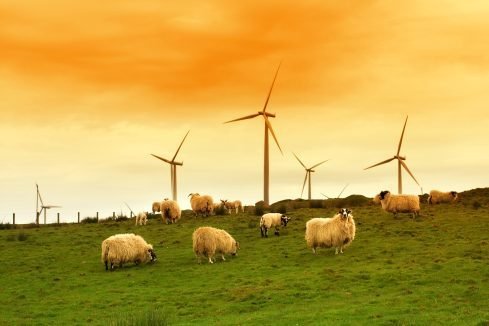We Scots are often guilty of failing to enunciate our Ts. If you ever hear us referring to a “bah-ery”, we’re talking about energy storage systems.
So we may drop our Ts when pronouncing the word, but there’s one “T” that Scottish batteries have a prime opportunity to support: the transmission network of Great Britain.
National Grid ESO’s Control Room is responsible for balancing the electricity transmission system every half-hour settlement period of every day. That’s 17,520 settlement periods being actively managed every year (17,568 in 2020, a leap year).
One of the most important tools they have at their disposal to manage this is the Balancing Mechanism (BM), a 60-90-minute window from closure of the wholesale electricity market to the end of the settlement period one hour ahead, in which they try to match generation with demand. Market participants in the BM can post Offers (to generate more or consume less) or Bids (to generate less or consume more), with National Grid issuing BOAs (Bid/Offer Acceptance) to individual assets to balance the system.
There are fundamental changes underway in Grid’s Control Room as they react to an ever-evolving system. Previously, large fossil plant remained on hot standby ready to turn capacity up or down in response to Grid’s balancing requirements. At 1.24pm on Wednesday 8th May, the UK celebrated a whole week without coal generation on the system for the first time since 1882. A matter of weeks later, on 31st May, we celebrated a two-week stretch without coal. These major milestones have been achieved just two years after we celebrated our first coal-free day since the industrial revolution.
As renewable output continues to grow apace to meet the UK’s power demand, coal’s role in the system balancing act is being displaced by flexible front-of-meter assets and smart grid solutions such as demand-side response. In January 2019, National Grid opened a Distributed Resources Desk dedicated to dispatching decentralised assets such as energy storage in the BM. Not only will this transition help decarbonise the grid, the distributed nature of these assets will help overcome locational constraints.
One such constraint exists at Hadrian’s wall, with the cables running overhead struggling to carry excess wind output from Scotland over the border to consumers in the south. This constraint has sometimes led to National Grid turning down windfarms at great cost to the consumer, often resulting in hyperbole in certain newspapers (they pay coal to turn down too, you know!).
The Western Link, a new 240-mile 2.2GW subsea cable between Hunterston in Ayrshire and Flintshire in North Wales (adjacent to populous Merseyside), will alleviate some of this constraint. National Grid estimates it will save £136m in balancing costs per year, a saving that will recoup the project’s £1bn cost in less than ten years and keep those turbines on when the wind is blowing. But with stranded Scottish wind sometimes reaching 4-5GW, it’s like removing the bottom chunk of the Nevis range: those peaks will remain. As will some location-specific bottlenecks.
And this is where Scottish batteries could step in. In the BM, system actions (marked by SO-flags) are actions taken by National Grid to overcome a locational constraint such as voltage limits in the south east or excess wind output in Scotland. Scottish batteries therefore have a great opportunity to take advantage of some of these SO-flagged actions, working alongside the likes of Cruachan pumped hydro to draw power from the network at times of high wind output and dispatch it when it’s needed at other times.
Flexitricity’s Control Room is operational 24/7/365, meaning there’s someone at the desk in Edinburgh every night, ready respond to system constraints. Our proprietary price optimisation algorithms feed our operational decision-making in the BM settlement period to settlement period: varying our prices optimally to ensure we maximise value for our connected sites when they’re dispatched, but also help National Grid overcome these constraints and keep the wind turbines turning.
And as more decentralised energy and renewable output continues to connect to the grid, opportunities will continue to grow for flexibility – particularly for Scottish batteries. Enunciated properly or not.








